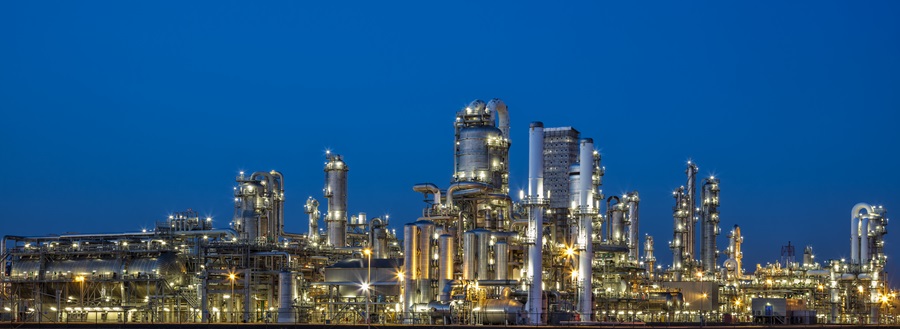Safely producing polymers for everyday use: Reaction Time
Reaction Time is our chemical industry blog where we look at the latest insights from VEGA’s industry experts and the challenges they face every day.
The other day I was putting groceries away and I gained a new appreciation for petrochemicals. As I found space in the refrigerator for a two-liter of soda, placed a new spaghetti strainer in a cupboard, stored a spray bottle of glass cleaner under the sink, and discarded the plastic grocery bag, it dawned on me that my entire grocery haul contained either polyethylene or polypropylene. Where would we be without these plastic polymers?
Petrochemicals (including plastic polymers) and the companies that manufacture them play a vital role in our lives. In this edition of “Reaction Time,” I’ll give a little background on petrochemicals and polymers and explain an important application in polymer production: the gas phase reactor.
Background: Petrochemicals and polymers
Oil isn’t the only product that comes out of the ground. There is an abundance of ethane extracted in the States, and according to the U.S. Energy Information Administration, ethane consumption and exports are on the rise. Refineries produce propane, butane, and additional petrochemical feedstocks used to manufacture plastic polymers.
Now, for a brief science lesson:
The American Chemistry Council describes a polymer as “a useful chemical made of many repeating units.” The ACC encourages its readers to visualize polymers by imagining “hooking together hundreds of paper clips to form chains.” Polymers are often constructed of carbon and hydrogen elements. Among these hydrocarbons are polyethylene and polypropylene, the two polymers that made my grocery trip more convenient. In petrochemical production, polymers are used as catalysts inside a reactor.
Polymer production in the gas phase
The gas-phase reactor is an important vessel in polyethylene (PE) and polypropylene (PP) plants. Depending on the process, either ethylene or propylene leaves a storage vessel and enters a reactor through the bottom. Once inside the reactor, feedstock mixes with a catalyst to form a powdery polymer. This powder forms a bed that loses density the closer it is to the top of the reactor.
Converted gas that reacts with the powder leaves the reactor quickly and transfers to a purging vessel, where nitrogen is pumped in to remove any entrained unreacted gases. Unconverted gas travels to the top of the vessel until it reaches the disengaging zone. Here, it separates from the powder, leaves the reactor, and is recycled back into the process.
Accurate level and density measurements are crucial in this application because users want to fill the reactors as high as possible without carrying over the powder, as powder carryover can foul downstream equipment and cause a process shutdown. Additionally, users may want to know when the reactor is empty enough to change over product grades. In these cases, the faster the change, the better.
Consistent, accurate, and reliable level and density measurements deliver the ultimate win-win: They allow users to maximize process efficiency without sacrificing equipment integrity.Radiometric measurement: making the difficult look easy
To monitor level and density measurement of PE or PP powder in a gas phase reactor, I recommend radiometric instruments. These solutions do require bringing radioactive sources into your plant. There will be regulations, and there will be training. Don’t let that deter you; radiometric instruments are used safely and successfully in applications across the world.
Radiometric detectors mount external to the reactor, so in many cases, they can be installed without downtime. That’s important for plants that run 24/7.Operating without contacting the product has the added benefit of sparing the detectors from buildup. We’re talking about chemical powders here; they are liable to paralyze a contact instrument with buildup.
For level measurement of the powder inside the reactor, VEGA offers the SoliTrac 31. This instrument uses a sensitive PVT rigid scintillator to measure energy coming from a radioactive source mounted in a secure container on the opposite side of the reactor. For more info on radiometric level measurement, read this white paper.
The innovative SoliTrac 31 is a natural fit for this application because it can build an accurate profile of the powdery bed, even though the bed is constantly shifting. Users can capture this by installing multiple linked detectors to track the reaction across short spans and deliver an overall level reading. In other words, this setup shows users where the reaction is happening in order to optimize throughput and prevent disruption downstream.
Running higher level in the reactor makes monitoring for carryover even more crucial. This is where the MiniTrac 31 comes into play. Independent of the level instruments, these radiometric detectors can measure changes in density to alert users to powder leaving the vessel with unreacted gas.
Related products
Conclusion
Plastic polymers are everywhere: Our refrigerators and pantries are full of bottles, bags, and containers that would not be there without polyethylene and polypropylene. The process of manufacturing these products requires some volatile applications—including the gas phase reactor. To operate at maximum efficiency, these challenging applications require durable radiometric instruments for level and density measurement. Think about that the next time it’s your turn to put away the groceries.
Want more?
We can't publish all of our petrochemical expertise in one blog post. Download our industry brochure to see all of our level and pressure measurement solutions for the water industry.
Download hereExport this article
Download as PDFShare this article
Comments ({{comments.length}})
{{getCommentAuthor(comment, "Anonymous")}} {{comment.timestamp | date : "dd.MM.yyyy HH:mm" }}
{{comment.comment}}







